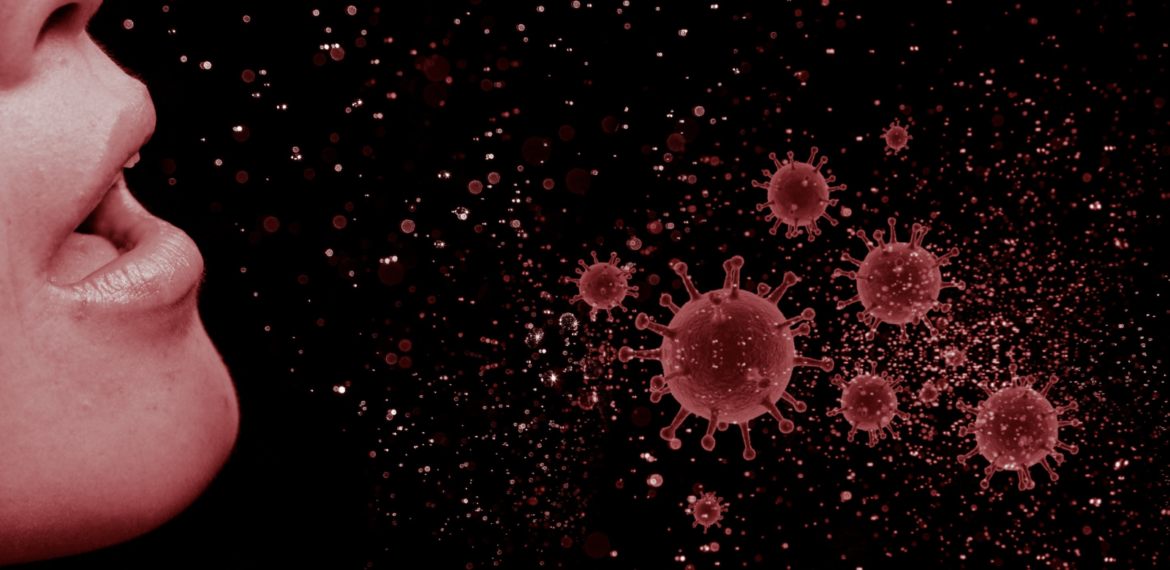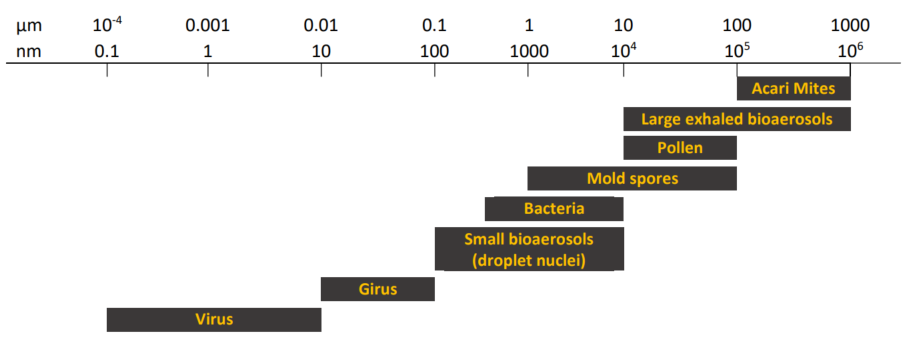
Humidification fights against bioaerosol infectivity
Humidification fights against bioaerosol infectivity
Relative humidity between 40% and 60% is ideal
• To reduce bioaerosol droplet evaporation,
• To reduce infection transmission,
• To reduce bioaerosol infectivity
BARRIER GESTURES
Everybody knows the barrier gestures: No face touching, hand washing, disposable tissue using, mask
wearing, cough/sneeze in the elbow. Mask wearing is very important when people are in public places
or supermarkets. But it is not always possible to wear a mask at home in family, in offices. Controlled
relative humidity between 40% and 60% is ideal to reduce the contamination by bioaerosols.
SURGICAL FACE MASK EFFICIENCY (1)

the respiratory infection effects decrease.

Bioaerosol transmission
At this time, evidences accepted scientifically suggest that a controlled relative humidity can reduce
the transmission of infectious agents by bioaerosols. (5)
What are bioaerosols?
Bioaerosols are airborne biological particles derived from virus, bacteria, fungi, protozoa, algae,
mites, plants, insects and their by-products, fragments and cell mass components (11)

Exhaled bioaerosols

They fall 1.5 -2.0 m height:
- in less of 6 seconds if diameter > 1mm,
- in ~ 6 seconds if diameter ~ 100 μm,
- in ~ 8 minutes if diameter ~ 10 μm,
- in ~ 1.5 hours if diameter ~ 3 μm,
- in ~ 12 hours if diameter ~ 1 μm,
- in ~ 41 hours if diameter ~ 0.5 μm. (4) (5)(7)
Note: 87% of exhaled bioaerosols are < 1 μm. (6)
Bioaerosols emited by coughing or sneezing

Correct relative humidity reduces bioaerosol transmission
Maintaining indoor humidity ratio around 7 – 10 g/kg (relative humidity 40%-60%) helps
To reduce the droplet evaporation process (5): large droplets are less rapidly changed into droplet
nuclei.
To reduce the transmission efficiency of virus airbornes:
“At 20ºC (dashed line), transmission efficiency is
highest at low RH, when influenza virions in an aerosol
are relatively stable, and desiccation of exhaled respiratory droplets produces droplet nuclei.
Transmission is diminished at intermediate RH when
virus particles are relatively unstable, but improves in
parallel with influenza virus stability at higher humidities.
At high RH, evaporation from exhaled particles is
limited, respiratory droplets settle out of the air, and
transmission is blocked” (8)

To reduce the bioaerosols infectivity:




Sources: (1) COVID-19: Why we should ware all mask, Sui Huang. (2) C. Mike Scofiel, P.E., and Elia Sterling. Dry Climate evaporative cooling with refrigeration backup, ASHRAE Journal 1992 (3) 2016 ASHRAE HVAC Systems and Equipment Handbook, Chap 22. Humidfiers (4) Wells, W. F., On Air-borne Infection. Study II. Droplets and Droplet Nuclei. Journal article: American Journal of Hygiene 1934 Vol.20 pp.611-18 (5) ASHRAE Position Document on Airborne Infectious Diseases Approved by ASHRAE Board of Directors April 14 , 2020 (6)Fabian P, McDevitt JJ, DeHaan WH, Fung ROP, Cowling BJ, et al. (2008) Influenza Virus in Human Exhaled Breath: An Observational Study. PLoS ONE 3(7):e2691. doi:10.1371/journal.pone.0002691 (7) Natural Ventilation for Infection Control in Health-Care Settings Editors: James Atkinson, Yves Chartier, Carmen Lúcia Pessoa-Silva, Paul Jensen, Yuguo Li, and Wing-Hong Seto. Geneva: World Health Organization; 2009. (8) Lowen AC, Mubareka S, Steel J, Palese P (2007) Influenza virus transmission is dependent on relative humidity and temperature. PLoS Pathog 3(10): e151. doi:10. 1371/journal.ppat.0030151 (9) Noti JD et. al, High Humidity Leads to Loss of Infections Influenza Virus from Simulated Coughs, PLoS ONE 8(2): e57485, 2013 (10) Blausen.com staff (2014). "Medical gallery of Blausen Medical 2014". (11) 2017 ASHRAE Fundamentals Handbook, Chap 10. Indoor environment health Author: P.E. David, Pharmacist and HVAC Specialist at Armstrong International

